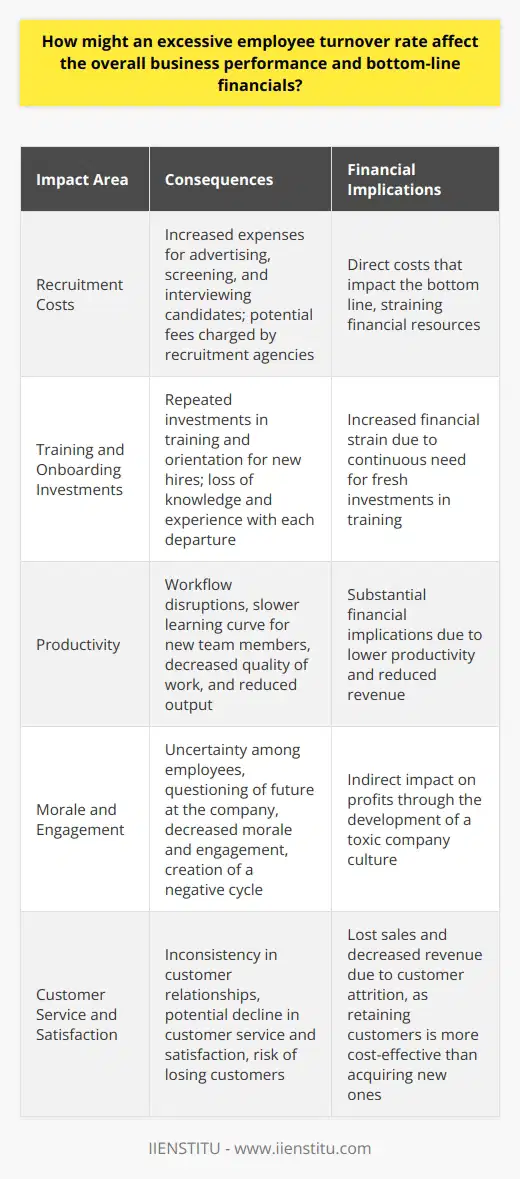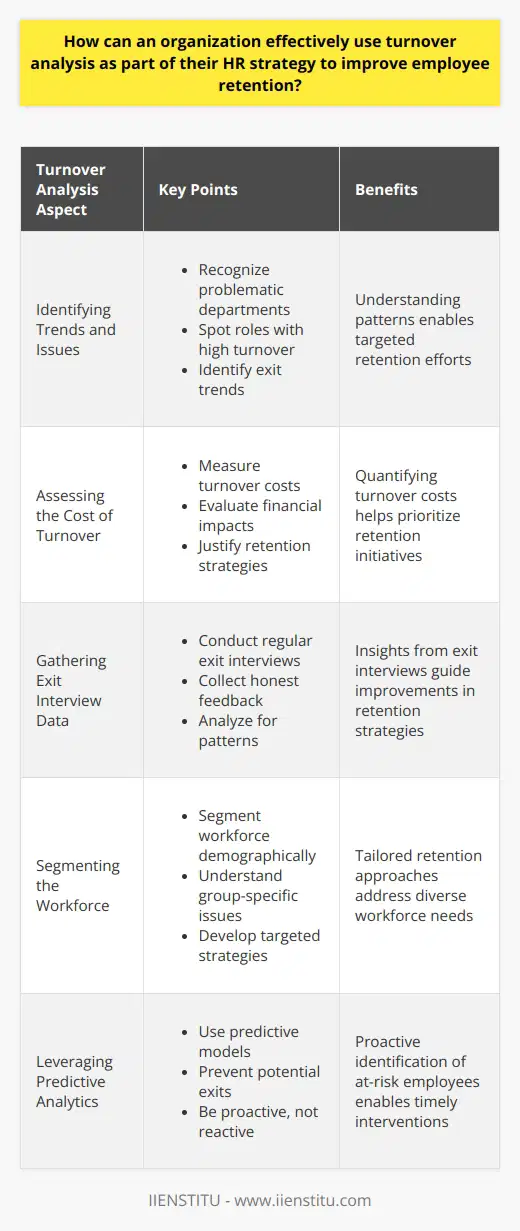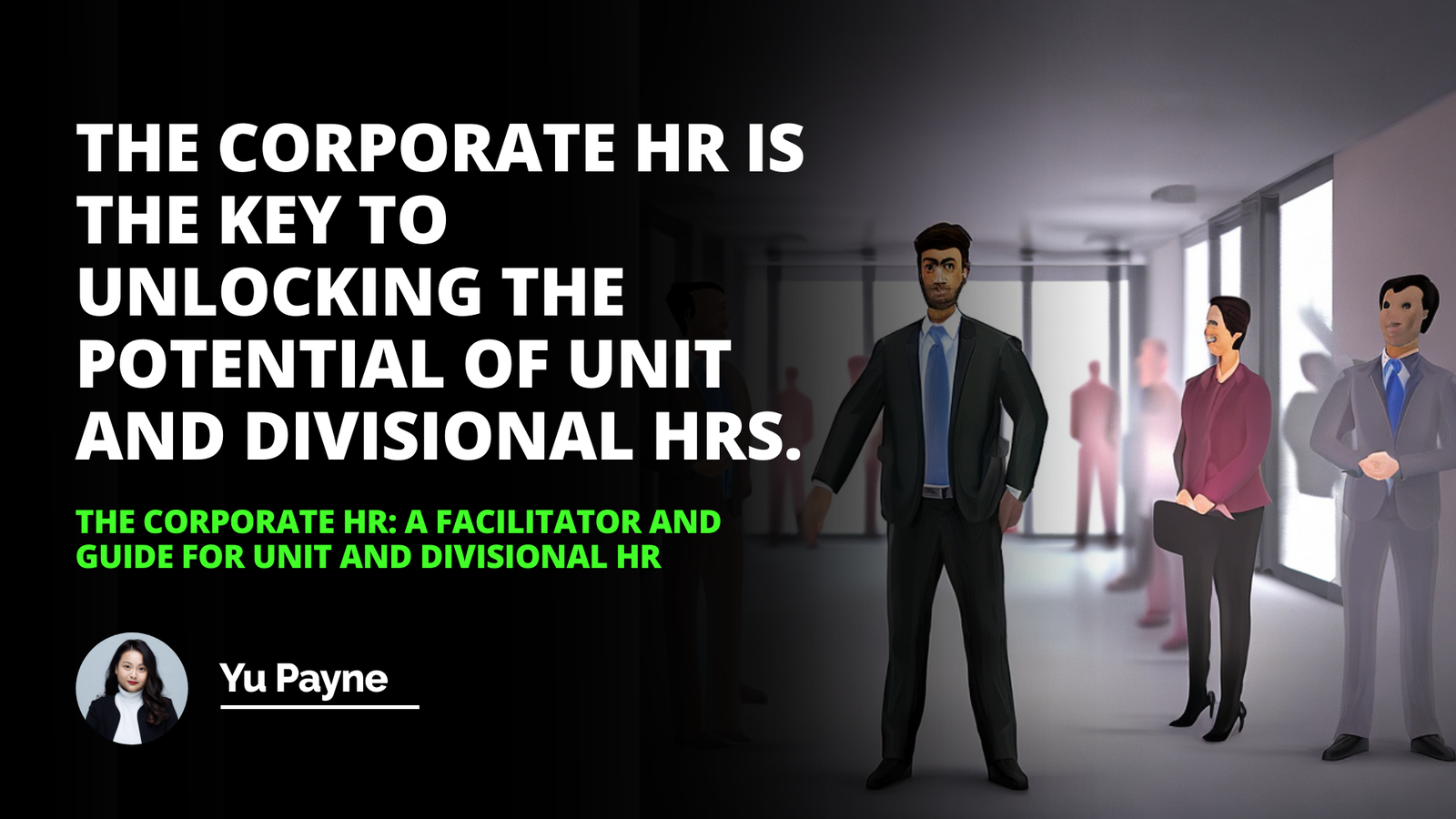
I still remember the day when my colleague, Sarah, announced she was leaving our company. She was one of our top performers, always cheerful, and seemed genuinely engaged with her work. Her departure was a shock to many of us. Over coffee, she confided that she felt unappreciated and saw no room for growth within the organization. That conversation opened my eyes to the profound impact employee turnover can have—not just on the individual, but on the entire team and company.
Employee turnover isn't just a statistic to be glanced over during quarterly reviews; it's a pivotal indicator of an organization's health. When talented people like Sarah decide to leave, it sends ripples throughout the company, affecting morale, productivity, and ultimately, the bottom line. Understanding why employees leave and how to encourage them to stay is essential for any business aiming for long-term success.
Understanding Employee Turnover
What Exactly is Employee Turnover?
At its core, employee turnover refers to the cycle of employees leaving an organization and being replaced by new hires. It's a natural part of any business, but when the rate of turnover becomes high, it signals deeper issues that need addressing. Turnover isn't just about numbers—it's about people, their experiences, and their reasons for moving on.
Employee turnover impacts:
Productivity levels: Frequent departures can disrupt workflow and reduce overall efficiency.
Financial costs: Hiring and training new employees require significant investment.
Team dynamics: New team members need time to integrate, which can affect collaboration.
Types of Turnover: The Three Faces
Understanding the different types of turnover is crucial for HR professionals aiming to develop effective retention strategies.
1- Voluntary Turnover: This occurs when employees choose to leave on their own accord. Reasons might include:
Seeking better compensation elsewhere.
Desire for career advancement opportunities not available in their current role.
Personal reasons such as relocating or changing careers.
2- Involuntary Turnover: This type happens when an organization decides to part ways with an employee due to:
Performance issues.
Organizational restructuring.
Economic downturns necessitating layoffs.
3- Functional Turnover: While turnover is often viewed negatively, functional turnover can be beneficial. It involves:
Departure of underperforming employees.
Opportunities to bring in fresh talent with new ideas.
Realigning team skills to organizational needs.
Salary Benchmarking: Key Strategy for Competitive Pay Structures
Empowering Employees: The Role of Corporate HR as an Advocate
HR Research: Decoding the Imperative Role in Organizational Success
HR Service Delivery: Optimizing Workforce Value in Modern Businesses
Calculating the Turnover Rate: The HR Metric
Monitoring the turnover rate provides valuable insights into the stability of the workforce. The formula is straightforward:
\[ \text{Turnover Rate (\%)} = \left( \frac{\text{Number of Separations}}{\text{Average Number of Employees}} \right) \times 100 \]
For example, if a company had 10 separations over a year and an average of 100 employees, the turnover rate would be:
\[ \left( \frac{10}{100} \right) \times 100 = 10\% \]
A high turnover rate might indicate underlying issues such as low job satisfaction or ineffective management, prompting further investigation.
Factors Contributing to Employee Turnover
Over the years, I've had countless conversations with colleagues who've decided to move on to new opportunities. Their reasons were varied, but patterns began to emerge. Understanding these factors is key to addressing turnover proactively.
Job Dissatisfaction: The Silent Culprit
Job dissatisfaction is often at the heart of voluntary turnover. When employees feel unfulfilled or unhappy in their roles, they start looking elsewhere. This dissatisfaction can stem from:
Lack of recognition: Employees who don't feel valued may lose motivation.
Limited growth opportunities: Without a clear career path, top talent may seek advancement elsewhere.
Poor work-life balance: Excessive workloads or inflexible schedules can lead to burnout.
I recall a friend, Mark, who left his job because, despite his hard work, he never received acknowledgment from his superiors. Simple gestures like a "Great job on that project!" can make a significant difference.
Ineffective Management: Leadership Matters
As the saying goes, "People don't leave jobs; they leave managers." An ineffective management style can drive employees away faster than almost any other factor. Key issues include:
Poor communication: When expectations aren't clear, employees feel lost.
Micromanagement: Overbearing oversight can stifle creativity and autonomy.
Lack of support: Employees need resources and encouragement to succeed.
Effective management involves listening to employees, providing constructive feedback, and fostering an environment where everyone feels empowered.
Personal Reasons: Life Happens
Sometimes, turnover is simply a result of life's twists and turns. Personal reasons contributing to employee turnover can include:
Family changes: Marriage, childbirth, or caring for relatives may necessitate a job change.
Relocation: Moving to a new city or country often requires finding new employment.
Health issues: Personal or family health concerns can impact an employee's ability to stay.
Recognizing that some factors are beyond the organization's control helps HR professionals focus on aspects they can influence.
Additional Factors: The Bigger Picture
Beyond individual reasons, broader factors can contribute to high turnover rates:
Company Culture: A toxic or misaligned culture can push employees away. Culture isn't just about perks—it's about values, behaviors, and the overall work environment.
Compensation and Benefits: Competitive pay and benefits are essential for attracting and retaining talent. While not the only factor, inadequate compensation can lead employees to seek opportunities that better meet their financial needs.
Job Fit: Sometimes, the job isn't what the employee expected, or their skills don't align with the role's demands. Ensuring a good job fit from the onset can reduce early turnover.
The Role of HR in Managing Employee Turnover
HR professionals are often on the front lines when it comes to tackling employee turnover. They play a critical role in not only addressing turnover as it happens but also implementing strategies to prevent unnecessary departures.
The Importance of HR's Role
Human Resources isn't just about hiring and firing; it's about cultivating an environment where employees can thrive. When HR professionals proactively engage with staff, they can uncover issues before they escalate into resignations.
Key aspects of HR's role include:
Policy Development: Crafting policies that promote fairness and consistency.
Employee Relations: Building strong relationships to understand employee needs.
Strategic Planning: Aligning HR strategies with organizational goals.
HR Strategies to Reduce Turnover
There are several effective HR techniques for reducing employee turnover. Let's delve into some of the most impactful ones.
1. Robust Hiring Practices
Hiring the right people from the start is essential. This means:
Clear Job Descriptions: Ensuring candidates understand the role to avoid mismatches.
Behavioral Interviews: Assessing not just skills but cultural fit and adaptability.
Realistic Job Previews: Providing candidates with an honest view of what to expect.
2. Training and Development
Investing in employees' growth shows that the organization values their contributions.
Onboarding Programs: Comprehensive onboarding helps new hires integrate smoothly.
Continuous Learning Opportunities: Workshops, seminars, and courses keep skills sharp.
Mentorship Programs: Pairing less experienced employees with veterans fosters knowledge transfer.
I remember when our company introduced a mentorship program. Not only did it boost morale, but it also significantly improved retention among new hires.
3. Employee Engagement and Motivation
Engaged employees are more likely to stay committed to the organization.
Regular Feedback: Implementing performance reviews and one-on-one meetings.
Recognition Programs: Celebrating achievements publicly can boost morale.
Employee Surveys: Gathering feedback to understand concerns and areas for improvement.
4. Effective Communication
Open lines of communication help build trust.
Town Hall Meetings: Allowing leadership to share updates and answer questions.
Open-Door Policies: Encouraging employees to voice concerns without fear.
Transparent Decisions: Keeping employees informed about changes that affect them.
5. Competitive Compensation and Benefits
While not the sole factor, fair compensation is vital.
Market Research: Ensuring salaries are competitive within the industry.
Benefits Packages: Including health insurance, retirement plans, and wellness programs.
Incentive Programs: Performance bonuses and profit-sharing align employee success with the company.
6. Career Development Opportunities
Employees want to see a future within the company.
Promotion Paths: Clear criteria and opportunities for advancement.
Skill Development: Supporting employees in acquiring new skills relevant to their career goals.
Cross-Training: Allowing employees to experience different roles within the organization.
One of my former coworkers, Lisa, stayed with the company for over a decade because she was continuously challenged and given opportunities to grow. This highlights the importance of career development in employee retention.
The Complexities of Managing Turnover
Managing employee turnover isn't a one-size-fits-all solution. It requires:
Data Analysis: Understanding trends and patterns in turnover data.
Customized Approaches: Tailoring strategies to different departments or employee groups.
Ongoing Effort: Retention strategies need to be maintained and adapted over time.
By recognizing the multifaceted nature of turnover, HR professionals can develop comprehensive strategies to address it.
A Case Study: Turning the Tide on Employee Turnover
Let's consider the example of BrightTech Solutions, a mid-sized software company that was grappling with a turnover rate of nearly 25% annually. The high turnover was affecting project timelines, increasing recruitment costs, and dampening team morale.
Identifying the Problem
The HR team at BrightTech decided to dive deep into the issue. They conducted exit interviews and found several common themes:
Employees felt there were limited opportunities for advancement.
Communication between management and staff was lacking.
Work-life balance was skewed due to demanding project schedules.
Implementing Solutions
Armed with this information, the HR team implemented several strategies:
1- Career Path Development: They established clear advancement pathways and invested in leadership development programs.
2- Enhanced Communication: Bi-weekly team meetings and quarterly town halls were introduced to improve transparency.
3- Work-Life Balance Initiatives: Flexible work arrangements and remote work options were offered.
They also provided reassignment request letter tips and information to employees seeking internal transfers, ensuring they could find roles better suited to their skills and interests within the company rather than looking elsewhere.
The Result
Within a year, BrightTech reduced their turnover rate to 15%. Productivity improved, and employee satisfaction scores increased significantly. This case underscores how strategic HR interventions can make a tangible difference.
Equipping HR Professionals for Success
The landscape of HR is continually evolving. To effectively combat employee turnover, HR professionals must stay ahead of the curve.
Importance of Continuous Learning
With new challenges emerging, continuous education is vital.
Online Courses: Platforms offering courses on employee turnover reduction strategies provide valuable insights.
HR Certificate Programs: Formal programs can deepen knowledge in areas like talent management and organizational behavior.
Networking: Engaging with other HR professionals can spark ideas and solutions.
By investing in their own development, HR professionals can implement cutting-edge HR strategies for employee retention.
Leveraging Technology
Technology offers tools that can aid in turnover analysis and retention efforts.
HR Analytics Software: Helps in identifying patterns and predicting turnover risks.
Engagement Platforms: Facilitate communication and feedback between employees and management.
Learning Management Systems: Support employee development and track progress.
Conclusion
Employee turnover is an inevitable aspect of the business world, but high turnover rates don't have to be. By understanding the underlying factors that contribute to turnover—be it job dissatisfaction, ineffective management, or personal reasons—organizations can take proactive steps to mitigate its impact.
HR professionals play an instrumental role in crafting and implementing strategies that enhance employee satisfaction and retention. From robust hiring practices to ongoing career development opportunities, these efforts not only reduce turnover but also foster a positive and productive work environment.
As I've learned through personal experiences and observations, retaining talented employees requires a genuine commitment to their well-being and professional growth. By placing people at the heart of organizational strategies, companies can build loyal, engaged teams poised for success.
References
1- Smith, J. (2018). Human Resource Management: People and Organizations. New York: McGraw-Hill Education.
2- Robbins, S. P., & Judge, T. (2017). Organizational Behavior (17th ed.). Boston: Pearson.
3- Dessler, G. (2019). Fundamentals of Human Resource Management (4th ed.). Upper Saddle River, NJ: Prentice Hall.
Frequently Asked Questions
What are the key strategies for addressing high levels of employee turnover in organizations?
Understanding Employee Turnover
Organizations often grapple with high turnover rates. Such trends can erode institutional knowledge. They also disrupt continuity within teams. Importantly, turnover affects morale. The costs to hire and train new employees are significant. Consequently, strategic approaches to address turnover are essential.
Analyze Turnover Causes
Start with identifying the reasons. Employee exit interviews yield valuable data. Common reasons include poor management, inadequate compensation, or limited growth opportunities. Compile and review this feedback regularly. It brings hidden issues to light.
Improve Hiring Practices
Fit matters a great deal. A proactive strategy is to refine hiring practices. Align these practices with company culture and values. This involves setting clear job expectations. Look for candidates who share organizational values. This can reduce early turnover.
Foster Employee Engagement
Engaged employees tend to stay. Provide meaningful work and recognition. Break monotony with challenging projects. Opportunities for personal growth are crucial. This encourages employees to invest in their roles. Regular feedback supports this engagement process.
Enhance Compensation and Benefits
Competitive pay is essential. But benefits extend beyond salary. Flexibility in work arrangements counts too. So do health and wellness programs. Ensure benefits align with employee needs.
Develop Career Paths
People look for advancement opportunities. Chart clear career paths within the organization. This involves ongoing training and education. It gives employees a sense of direction. They know what to aim for.
Promote a Positive Work Culture
Culture can attract or repel talent. A positive culture embraces diversity and inclusion. It supports collaboration and open communication. Acts to resolve conflicts quickly. This builds a strong community within the workplace.
Offer Supportive Management
Employees often leave managers, not jobs. Train managers in effective leadership techniques. Emphasize emotional intelligence and conflict resolution. Ensure they understand their role in reducing turnover. They should mentor their teams actively.
Conclusion
Addressing high employee turnover is multifaceted. It requires sustained efforts across the organization. Implementing these strategies offers a robust framework. With these in place, companies can expect to lower their turnover rate. The benefits of such an approach are manifold. It builds a more stable, skilled, and committed workforce.

How might an excessive employee turnover rate affect the overall business performance and bottom-line financials?
Impact of High Employee Turnover on Business Performance
Recruitment Costs Rise
Excessive employee turnover heightens recruitment expenses significantly. Businesses must advertise new positions. They also screen and interview candidates. Each step consumes valuable resources. Recruitment agencies often charge substantial fees. These are direct costs. They impact the bottom line directly.
Training and Onboarding Investments Increase
New hires require training. They need orientation. They must learn company protocols. Training is an investment. Experienced workers leaving means lost knowledge. Newcomers fill these gaps slowly. Each departure necessitates fresh investment. This cycle strains financial resources.
Productivity Drops
High turnover disrupts the workflow. Teams need time to adjust. New members learn less quickly. Ongoing projects suffer. This results in lower productivity. The quality of work can diminish. Output decreases. The financial implications are substantial. Less output equals reduced revenue.
Morale and Engagement Decline
Turnover affects morale. Employees feel uncertain. They question their future at the company. Low morale hampers engagement. Disengagement leads to less productivity. It creates a cycle of negativity. This environment does not foster success. It directly impacts company culture. A toxic culture can affect profits.
Customer Service and Satisfaction Suffer
Customers expect consistency. They rely on relationships with staff. Frequent turnover breaks these bonds. Customer service can waver. Satisfaction may decline. Unhappy customers can leave. Retaining customers costs less than acquiring new ones. Lost customers mean lost sales. Revenue decreases as a result.
Intellectual Property Risks Increase
Employee exits pose risks. Intellectual property can be vulnerable. Former employees take knowledge with them. They might join competitors. Confidential information could be compromised. These scenarios threaten competitive advantage. They can have legal and financial consequences.
Brand Reputation May Be Damaged
Company reputation matters. High turnover sends negative signals. It suggests instability within the company. Potential employees may choose competitors. The talent pool shrinks. Hiring becomes more challenging. It can force companies to settle for less qualified candidates. This situation can affect company standards and revenue.
In conclusion, excessive turnover costs businesses greatly. Financial performance declines. Productivity, morale, and customer satisfaction suffer. Intellectual property comes under threat. Reputation risks rise. Each of these factors erodes the bottom line. Companies must address turnover to remain competitive and profitable.

How can an organization effectively use turnover analysis as part of their HR strategy to improve employee retention?
Understanding Turnover Analysis
Turnover analysis examines why employees leave. It tracks departure patterns. This data informs HR strategy. Organizations can use it for improving employee retention.
Identifying Trends and Issues
Analyzing turnover reveals critical trends. It might show department-specific issues. Certain roles may see higher attrition rates. Understanding these patterns is crucial.
- Recognize problematic departments
- Spot roles with high turnover
- Identify exit trends.
Assessing the Cost of Turnover
High turnover is expensive. It impacts productivity and morale. Turnover cost analysis is vital. It measures financial impact. HR strategists can justify retention programs based on these costs.
- Measure turnover costs
- Evaluate financial impacts
- Justify retention strategies.
Gathering Exit Interview Data
Exit interviews provide valuable insights. They uncover reasons for leaving. Honest feedback is essential here. Trends in exit data guide targeted retention efforts.
- Conduct regular exit interviews
- Collect honest feedback
- Analyze for patterns.
Segmenting the Workforce
Different groups may leave for distinct reasons. Demographic segmentation helps understand these differences. This allows for tailored retention strategies.
- Segment workforce demographically
- Understand group-specific issues
- Develop targeted strategies.
Improving Onboarding and Development
Effective onboarding encourages retention. Development opportunities help too. Analyzing turnover highlights shortcomings in these areas. Enhancing these processes can reduce turnover.
- Enhance onboarding procedures
- Provide development opportunities
- Analyze effects on turnover.
Evaluating the Impact of Management
Management style affects turnover. Analysis might highlight managerial problems. Training for managers could become a focus. This can foster better employee relationships and reduce turnover.
- Assess management's impact
- Identify training needs
- Implement management improvements.
Leveraging Predictive Analytics
Predictive analytics forecast turnover risks. They use historical data. This proactive approach prevents potential exits.
- Use predictive models
- Prevent potential exits
- Be proactive, not reactive.
Iterating the Retention Strategy
A static retention strategy may fail. The organization should adapt it based on turnover analysis. Regular reviews ensure continued alignment with workforce needs.
- Evolve retention strategies
- Review regularly
- Adapt to findings.
Conclusion
Turnover analysis is a strong tool. It identifies issues and informs strategies. Organizations that harness its full potential can improve retention effectively. The benefits include cost savings, better performance, and a more engaged workforce. Implementing a robust turnover analysis process is an investment in an organization's future.



